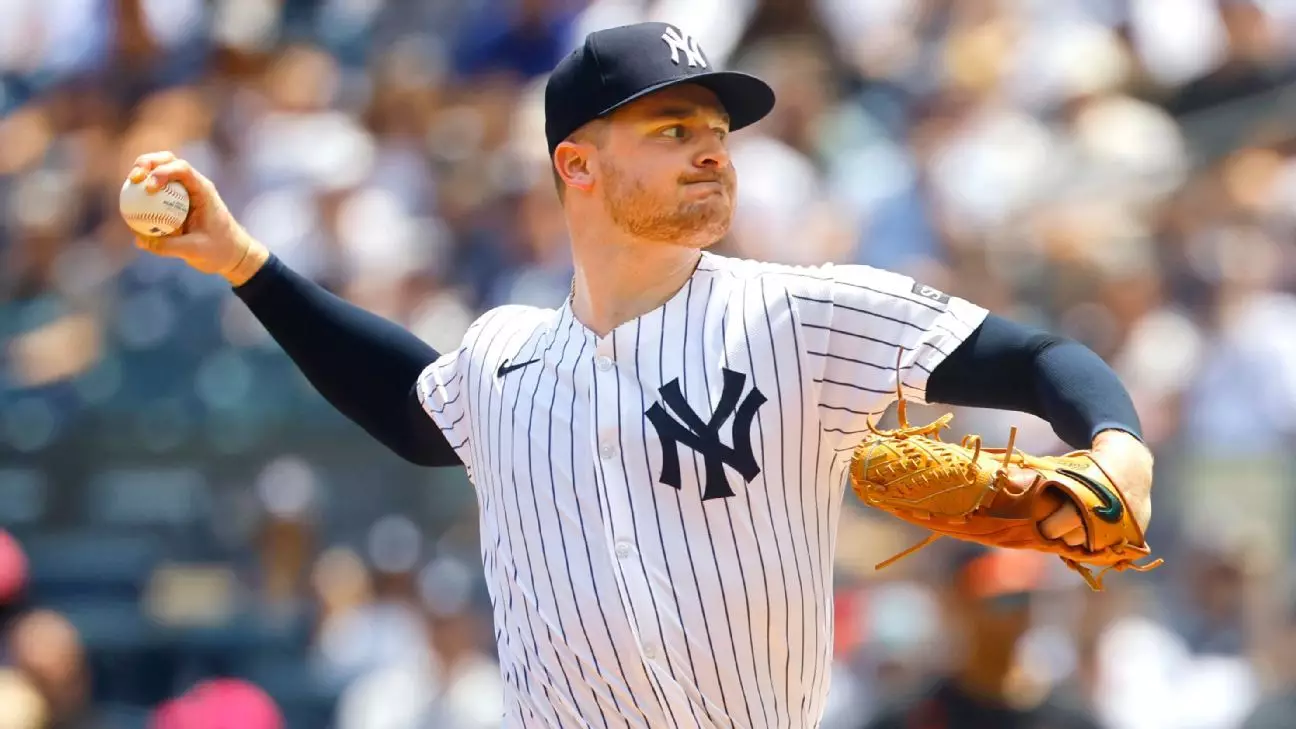In the high-stakes world of Major League Baseball, where a single injury can ripple through an entire team, Clarke Schmidt’s anticipated Tommy John surgery underscores the brutal nature of the sport. Baseball pitchers are uniquely vulnerable, as their careers often hinge on the health of their arm and elbow. Schmidt’s diagnosis serves as a stark reminder that even promising talents are not immune to the relentless physical toll of their craft. The injury, specifically a torn ulnar collateral ligament (UCL), is a familiar adversary for pitchers, frequently necessitating a grueling surgical procedure that sidelines players for long stretches—and sometimes an entire season or more. For Schmidt, this is the second such surgery, which raises questions about the wear and tear of professional pitching and whether the current approach to injury prevention is sufficient.
The physical and mental stresses endured by pitchers are often underestimated. Schmidt’s situation reveals both the fragility and resilience required for sustained success in baseball. While some interpret injuries as mere bad luck, a deeper analysis suggests they are an inevitable part of the high-impact, high-repetition motion that baseball demands from its pitchers. Yet, the question remains—are teams investing enough in injury mitigation strategies? Is the training regimen evolving sufficiently to protect pitchers like Schmidt from recurring injuries? The cycle of injury and recovery highlights a fundamental challenge in professional sports: balancing aggressive performance with sustainable health.
The Yankees’ Rotation: A Shattered Foundation
The Yankees have found themselves in an unprecedented predicament—losing four starters to injury within a single season. Gerrit Cole’s Tommy John surgery last March, Luis Gil’s ongoing recovery from a lat injury, Ryan Yarbrough’s strained oblique, and now Schmidt’s impending surgery create a perfect storm of pitching instability. This crisis exposes the depth (or lack thereof) of the Yankees’ pitching staff and emphasizes the importance of strategic roster management. When a team heavily reliant on its starting rotation faces such a series of setbacks, the entire team’s structure is at risk of collapsing under the weight of uncertainty.
Schmidt’s emergence this season provided a much-needed spark for the Yankees’ starting corps, posting a respectable 3.32 ERA across 14 starts. His ability to produce quality outings suggested that he was evolving into an integral piece of the team’s future. Losing him not only weakens the present but also casts doubt on the Yankees’ long-term plans. The internal options—veterans like Carlos Carrasco and Allan Winans, along with prospects such as Cam Schlittler—offer some immediate relief but lack the consistency and experience to fill a major role fully. The urgency to acquire outside help before the trade deadline intensifies, as the Yankees cannot afford to rely solely on reclamation projects or inexperienced arms to bridge this gap.
Adding to the challenge is the psychological impact on the team’s pitching staff. The multiple injuries serve as a cautionary tale about durability and the unpredictability of health. The Yankees’ management now faces the difficult task of re-evaluating their approach to pitcher health, recovery protocols, and possibly overhauling their staff’s workload to prevent further calamities. The current scenario highlights an uncomfortable truth—success in baseball is as much about managing injuries and mental resilience as it is about talent and strategy.
An Uncertainty-Driven Future for the Yankees
Looking ahead, the Yankees’ immediate concern is to patch the rotation temporarily and long-term to sustain a competitive edge. The reliance on Martian-level internal options like Cam Schlittler or veterans like Carlos Carrasco leaves much to be desired, revealing a vulnerability in their roster depth. The strategy to remain competitive hinges on acquiring experienced starters before the trade deadline, a move that could define the team’s season.
Furthermore, Schmidt’s injury brings to light broader issues within the sport — the relentless demand for performance may come at the expense of long-term health. The industry’s approach to pitcher management, workload optimization, and injury prevention must evolve if teams are to avoid losing promising careers mid-flight. The Yankees, famous for their postseason aspirations, now grapple with rebuilding their rotation from the ground up, and every decision they make will have lasting consequences.
Clarke Schmidt’s injury is not merely a setback for a single player but a symbol of the ongoing battle professional teams face: balancing excellence with durability. The Yankees’ current predicament exposes vulnerabilities that could reverberate well beyond this season—unless corrective measures and strategic foresight come into play swiftly. The road to championship contention requires more than talent; it demands resilience, adaptability, and an unwavering commitment to preserving the health of its pitchers amid the brutal realities of professional baseball.

